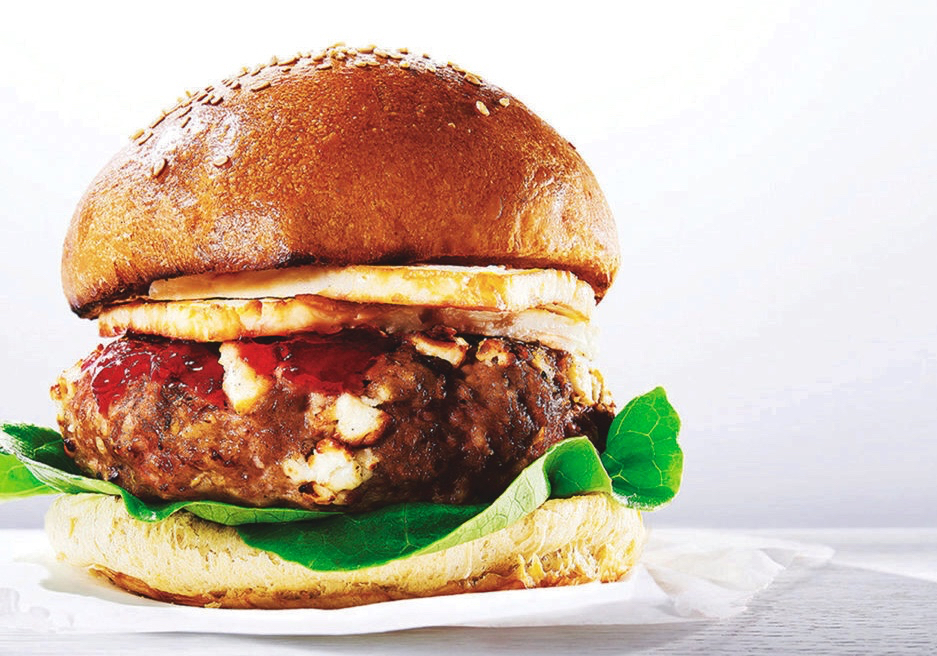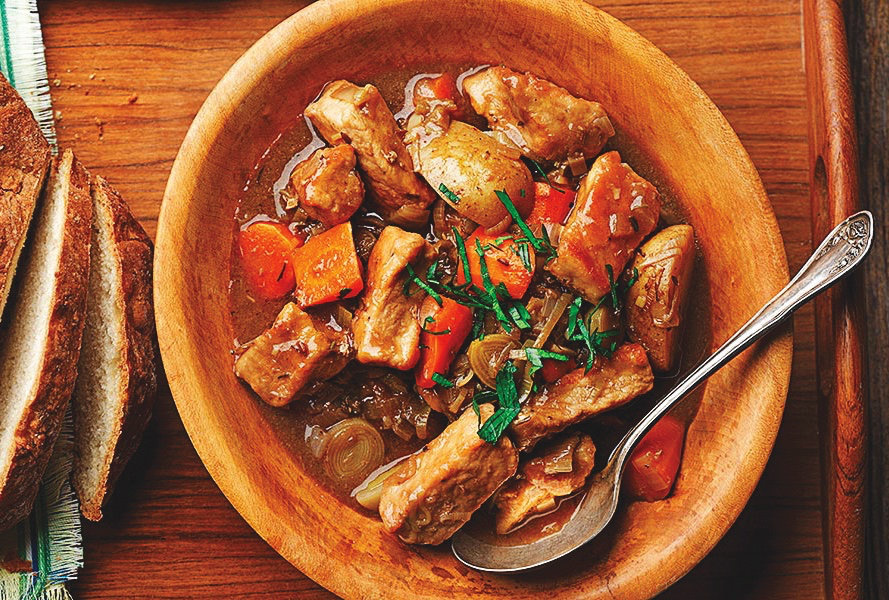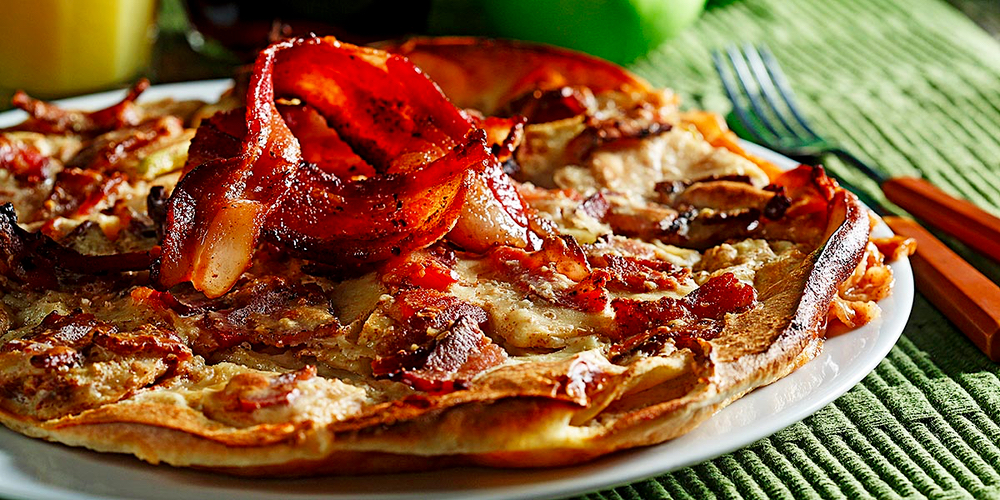Chances are you have a few dandelions, chickweed, purslane, lamb’s quarters or even stinging nettle growing in your yard. Keeping up with these vigorous growers is a constant chore. To make the task a little more fun this year, why not try eating them? That’s right, eat your garden weeds.
Eating weeds is not as crazy as it sounds, nor is it a new idea. Ask a few seniors and you may uncover recipes for purslane, wild sorrel or other wild greens. Perhaps you’ve already enjoyed a sip or two of dandelion wine. Or, if you’ve been to a fancy restaurant lately, you may have had dandelion greens in your salad or burdock root in your stir-fry.
Read Also

Your best (and easiest) holiday dainty tray
Make-ahead recipes, store-bought goodies and co-operation with friends and family: Here’s how to throw together a stunning, low-stress tray.
Eating weeds makes perfect sense. They’re tasty, cheap, readily available and loaded with antioxidants, vitamins, protein, fibre and other nutrients. In fact, many weeds are more nutritious than the produce we grow or buy at the grocery store.
Just imagine how much fun you’ll have when your family learns the spinach cheese biscuits they gobbled up are actually stinging nettle biscuits!
Before you pick, be certain about which plants and which parts are edible. A great reference is the Guide to Useful Plants by botanist Laura Reeves of Prairie Shore Botanicals in Gardenton, Manitoba. In addition to identification and harvesting tips, her book gives information about medicinal uses of wild edibles and lists any cautionary notes associated with a particular plant.
Here are five common weeds to get you started. Try a small amount and gradually add more as you become accustomed to them. Be sure to pick from areas that are free of sprays, pets or other pollutants.
Chickweed
This low-growing, sprawling plant has tiny white flowers and tiny oval leaves. It’s one of the first plants to blossom every spring. Toss a handful of fresh leaves and flowers into a salad for added flavour, texture and colour. Some say the flavour tastes like alfalfa sprouts, some say it reminds them of baby corn ears. Try it and see what you think.
Dandelions
Every part of the dandelion is edible. The tender young leaves can be tossed in salads or used in place of spinach in hot dishes. Closed buds can be used for tasty fried fritters (recipe below). Roasted roots can be used to make a hot cocoa-like beverage while blossom petals, when pulled from their base, add lovely colour to green salads. Older leaves are edible as well, but the white sap makes them less appealing and more bitter.
Lamb’s quarters
Use the tender shoots and leaves of lamb’s quarters raw or cooked in place of spinach, its close relative. You’ll get more protein, calcium, fibre, vitamin A and potassium although slightly less iron. The seeds, similar to quinoa, are edible, but the difficulty preparing them is hardly worth the effort.
Purslane
You’re likely very familiar with this vigorous, low-growing succulent plant that defies efforts to control it with its endless seeds and ability to reroot from small plant pieces. Before it flowers, use raw leaves in salads and add stems to stir-fries. Portulaca, as it is commonly called, tastes a little like cucumber with a touch of lemony tartness. If you really want to go all out, use big stems to make dill-pickled purslane which is great on burgers.
Stinging nettle
Despite its stinging nature, this tasty, nutritional powerhouse is well worth donning a pair of gloves to harvest. Spring is the best time to harvest young shoots and leaves before the plant goes to seed. To disable the stinging mechanism, you must cook or dry stinging nettle — do not eat fresh! Once blanched, use stinging nettle in any cooked recipe that uses spinach. While just a little darker, it looks and tastes a lot like spinach. In fact, my family likes it better than spinach. Use dried stinging nettle to make a rejuvenating tea made even tastier when combined with hyssop or mint.
 Wildflower fritters
Wildflower fritters
- 1/2 c. whole wheat flour
- 1 tbsp. ground flax
- 1 tbsp. baking powder
- Pinch salt
- 1/2 c. milk
- 2 tsp. sugar
- 1 tbsp. vegetable oil
- Dandelion, red clover or milkweed flowers
Combine dry ingredients. Add wet ingredients and mix just until batter is smooth.
Dip flowers in batter and deep-fry in vegetable oil just above medium heat.
Remove fritters when they’ve turned a light brown. Place on paper towel to drain and enjoy.
Source: Laura Reeves, www.psbotanicals.com
 Stinging nettle & potato soup
Stinging nettle & potato soup
- 6 c. lightly packed stinging nettles
- 1/2 tbsp. canola oil
- 1 onion, chopped
- 2 cloves garlic, minced
- 4 medium potatoes, cut into small cubes
- 5 c. soup stock
- Salt and pepper to taste
- 1 tbsp. chopped dill
With rubber gloves, wash and rinse stinging nettle. Separate the leaves from the stems.
Heat oil in large saucepan over medium heat.
Add onion to pan and cook until starting to soften, about 2 minutes.
Add garlic and potatoes to pan, cook for 5 minutes stirring every minute or so until potatoes begin to stick. Do not allow onion or garlic to brown.
Roughly chop stinging nettle stems and add to pan.
Add stock to pan, bring to boil. Simmer for 10 to 15 minutes until potatoes and nettle stems are soft.
Add nettle leaves and cook until wilted, about 2 minutes. Remove from heat.
Use an immersion blender to purée all ingredients into a smooth soup.
Add salt and pepper to taste. Garnish with chopped dill.
Serves 4-6.
Source: www.gettystewart.com
 Stinging nettle and cheese biscuit
Stinging nettle and cheese biscuit
- 3 c. loosely packed stinging nettle
- 1 c. all-purpose flour
- 1 c. whole wheat flour
- 1 tbsp. baking powder
- 1/4 tsp. baking soda
- 1/2 tsp. salt
- 1/3 c. butter, cut into 1-inch chunks
- 1/2 c. grated cheddar cheese (plus more for top)
- 1-1/4 c. buttermilk or sour milk (1 tbsp. lemon juice with milk to make 1-1/4 c.)
With rubber gloves, wash and rinse stinging nettle. Separate the leaves from the stems (use stems for tea). You should have about 2 cups of loosely packed leaves.
In saucepan, over medium heat add leaves and 1 tbsp. of water. Stir with a wooden spoon and cook until leaves have wilted, about 2 minutes. Drain and squeeze out as much water as possible.
Chop into small pieces and set aside.
Preheat oven to 450 F.
Stir together flours, baking powder, baking soda, and salt. Cut in butter using a pastry blender until mixture resembles coarse crumbs. Stir in grated cheese. Add chopped nettle.
Make a well in the flour mixture. Add buttermilk. Stir just until moistened.
Using a tablespoon, drop dough onto greased baking sheet.
Optional: sprinkle more cheese on top of each biscuit.
Bake 10 to 12 minutes or until golden.
Makes 8-10 biscuits.
Source: www.gettystewart.com

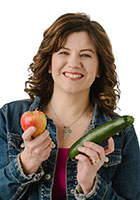

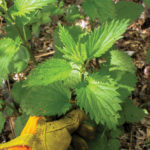 Wildflower fritters
Wildflower fritters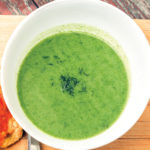 Stinging nettle & potato soup
Stinging nettle & potato soup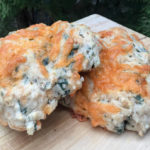 Stinging nettle and cheese biscuit
Stinging nettle and cheese biscuit


